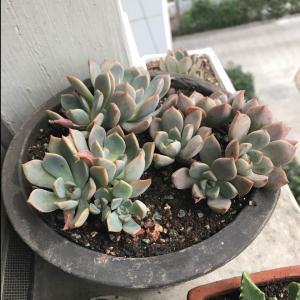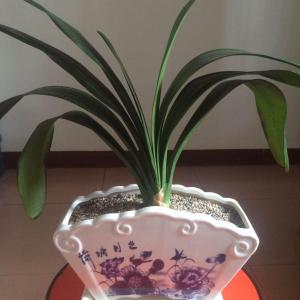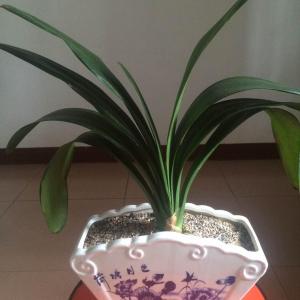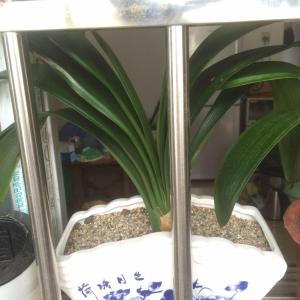文章
Dummer. ゛☀
2017年09月15日

Dead and wilting young plants, softening and decaying of mature plants. Also the larvae are often found within the root tubers and they are 8-10mm long white coloured maggots.
Plants affected
Mainly Onions but other members of the Allium family can also be attacked.
About Onion fly
Adult Onion Flies emerge from pupae that have over-wintered within the soil.
Pupal cases are brown, oval shaped and about 10mm long.
Onion flies have several generations a year, the first generation usually emerges about May/June time.
The first generation of adults to emerge are able to reproduce within a few days and females then lay batches of eggs onto or nearby onion seedlings.
The eggs laid are small, white and elongated, with darker stripes that run longitudinally.
Second and third generations attack the onion sets which will have developed from the seedlings.
The damage is caused not by adult flies but by their grey, legless maggot-like larvae (8mm long) feeding on the onion sets and moving from one to another in the soil.
Adult onion flies are similar in appearance to house flies however they are grey, slightly smaller and have longer legs.
Larvae can often cause secondary damage such as rotting when they bore in and out of the roots.
Treatment
Chemical
Products containing the following chemical ingredients are all effective on Cutworms
There are no approved insecticides currently available to amateur gardeners.
Note: It is important to read manufacturer's instructions for use and the associated safety data information before applying chemical treatments.
Organic
Regular observation of crops to check for damage or infestation and remove any affected plants immediately and incinerate.
Keep weeds under control that could be alternative host plants e.g. dandelions.
Crop containment e.g. Fleece barrier to stop flying adults, or grow in poly- tunnels.
Avoid planting in soils that have un-rotted organic matter present.
Plant sets instead of seeds and avoid planting in rows if possible to stop maggots moving from plant to plant.
Avoid sowing at peak Onion Fly breeding times.
Prevention
Very efficient checks of the crop for any signs of infestation, any prompt removal of any plants affected, use sticky traps to monitor numbers of adults using white and yellow traps.
Use biological pest control species to control numbers, such as Predatory Flies – Coenosia tigrina, Wasp sp. – Aphaerata pallipes, Beetle sp. – Aleochara bilineata or the Fungus – Entomopthora muscae.

Plants affected
Mainly Onions but other members of the Allium family can also be attacked.
About Onion fly
Adult Onion Flies emerge from pupae that have over-wintered within the soil.
Pupal cases are brown, oval shaped and about 10mm long.
Onion flies have several generations a year, the first generation usually emerges about May/June time.
The first generation of adults to emerge are able to reproduce within a few days and females then lay batches of eggs onto or nearby onion seedlings.
The eggs laid are small, white and elongated, with darker stripes that run longitudinally.

Second and third generations attack the onion sets which will have developed from the seedlings.
The damage is caused not by adult flies but by their grey, legless maggot-like larvae (8mm long) feeding on the onion sets and moving from one to another in the soil.
Adult onion flies are similar in appearance to house flies however they are grey, slightly smaller and have longer legs.
Larvae can often cause secondary damage such as rotting when they bore in and out of the roots.
Treatment
Chemical
Products containing the following chemical ingredients are all effective on Cutworms
There are no approved insecticides currently available to amateur gardeners.

Note: It is important to read manufacturer's instructions for use and the associated safety data information before applying chemical treatments.
Organic
Regular observation of crops to check for damage or infestation and remove any affected plants immediately and incinerate.
Keep weeds under control that could be alternative host plants e.g. dandelions.
Crop containment e.g. Fleece barrier to stop flying adults, or grow in poly- tunnels.
Avoid planting in soils that have un-rotted organic matter present.
Plant sets instead of seeds and avoid planting in rows if possible to stop maggots moving from plant to plant.
Avoid sowing at peak Onion Fly breeding times.

Prevention
Very efficient checks of the crop for any signs of infestation, any prompt removal of any plants affected, use sticky traps to monitor numbers of adults using white and yellow traps.
Use biological pest control species to control numbers, such as Predatory Flies – Coenosia tigrina, Wasp sp. – Aphaerata pallipes, Beetle sp. – Aleochara bilineata or the Fungus – Entomopthora muscae.
0
0
文章
Miss Chen
2017年09月13日

PLAGAS DEL AJO

Cultivo del ajo: Plagas, enfermedades y fisiopatías en el cultivo de ajos
Mosca de la cebolla (Phorbia antigua Meig)
Cultivos a los que ataca: Ajo, cebolla, puerro.
Descripción de las larvas
6-8 mm. Color gris-amarillento y con 5 líneas oscuras sobre el tórax. Alas amarillentas. Patas y antenas negras. Avivan a los 20-25 días. Ponen unos 150 huevos.
Ciclo biológico
Inverna en el suelo en estado pupario. La primera generación se detecta a mediados de marzo o primeros de abril. La ovoposición comienza a los 15-20 días después de su aparición. Hacen sus puestas aisladas o en conjunto de unos 20 huevos cerca del cuello de la planta, en el suelo o bien en escamas. La coloración de los huevos es blanca mate. El período de incubación es de 2 a 7 días. El número de generaciones es de 4 a 5 desde abril a octubre.
Daños
Ataca a las flores y órganos verdes. El ápice de la hoja palidece y después muere.

Métodos de control
· Desinfección de semillas. Por cada kilogramo de semillas deben emplearse 50 g de M.A. de heptacloro.
· Lucha aérea.
Los tratamientos deben repetirse cada 8-10 días; pueden utilizarse los siguientes productos:
-Clorpirifos 5 %, a 60 kg/Ha.
-Dimetoato 40 % LE, a 100-125 cc/Hl.
-Lebaycid 50 % LE, a 150-200 cc/Hl.
-Foxim 10 %, a 50 kg/Ha.
-Diazinon 60 % LE, a 100 cc/Hl.
-Fonofos 5 %, a 40-50 kg/Ha.
Tiña del ajo y de la cebolla (Lita alliela)
Cultivos a los que ataca: ajo y cebolla.
Descripción
Las larvas presentan una longitud aproximada de 1 cm y color verde claro.
Los adultos son lepidópteros de color pardo, de aproximadamente 0,5 cm de longitud.
Ciclo biológico
Los adultos hacen su aparición en primavera. La ovoposición la efectúan sobre las plantas atacadas que avivan según temperaturas a los 10-12 días.
Daños
Abre galerías en bulbos y hojas. En principio suelen atacar a las hojas y después pasan a los bulbos. Las plantas atacadas amarillean y mueren.
Métodos de control
En los tratamientos químicos pueden emplearse los siguientes productos:
-Carbaril 50 % PM, a 200-250 g/Hl.
-Endosulfán 35 % LE, a 150-300 cc/Hl.
-Triclorfon 80 % PM, a 250-300 g/Hl.
-Metil-azinfos 20 % LE, a 150-250 cc/Hl.
-Etil-aparation 50 % LE, a 150 cc/Hl.
-Metamidofos 50 % LE, a 100 cc/Hl.
-Fosmet 50 % LE, a 250 cc/Hl.
Polilla (Laspeyresia nigricana Steph)
Descripción
El insecto perfecto es una mariposa de 15 mm de envergadura. Sus alas anteriores son de color azul oliváceo más o menos oscuro y salpicadas de pequeñas escamas amarillo ocre; las alas posteriores son grisáceas. Las larvas son amarillas de cabeza parda, de 15 a 18 mm de largo.
Ciclo biológico
Las hembras ponen los huevos en hojas a finales de mayo. Tan pronto avivan las larvas penetran en el interior. Aproximadamente tres semanas después al suelo, donde pasan el invierno y realizan la metamorfosis en la primavera siguiente.
Daños
Causan daños al penetrar las orugas por el interior de las vainas de las hojas hasta el cogollo. Se para el desarrollo de las plantas, amarillean las hojas y puede terminar pudriéndose la planta.
Métodos de control
· Medios culturales. En las zonas donde este insecto tiene importancia económica, se recomienda sembrar pronto.
· Lucha química. En zonas muy afectadas se repetirá el tratamiento a los 15 días.
· Sirven los tratamientos recomendados para gorgojo.
Gorgojo del ajo (Brachycerus algirus)
Descripción
Mide de 4 a 5 mm de longitud, de color pardo negro, con pequeñas manchas blancas en los élitros.
Daños
Las larvas de color blanco destruyen los bulbos.
Métodos de control
· Lucha química:
-Carbaril 50 % PM, a 200-250 g/Hl.
-Endosulfan 35 % LE, a 150-300 cc/Hl.
-Triclorfon 80 % PM, a 250-300 g/Hl.
-Metil-azinfos 20 % LE, a 150-250 cc/Hl.
-Etil-parathion 50 % LE, a 150 cc/Hl.
-Metamidofos 50 % LE, a 100 cc/Hl.
-Fosmet 50 % LE, a 250 cc/Hl.
Nematodos Meloidogyne
Cultivos a los que ataca
Tomate, patata, berenjena, ajo, etc.
Importancia
Es muy importante en toda la horticultura forzada o intensiva, ya que uno de los factores principales para que se detecte su presencia es la repetición de los cultivos. En casos de verdaderos ataques las producciones son nulas.
Descripción
El macho presenta un estilete de 16-24 micras de longitud, el cual presenta protuberancias. En las hembras dicho estilete presenta protuberancias bien definidas y una longitud de 14-16 micras.
Biología
Son necesarias temperaturas superiores a 14 ºC para mostrarse activos. El número de huevos suele ser de 350-600. La incubación se realiza con rapidez. Con temperaturas adecuadas el ciclo suele durar entre 20 y 40 días. El número de generaciones suele estar sujeto a las condiciones ambientales, pudiendo decir que se encuentra entre 4 y 9 generaciones anuales. La reproducción puede ser por partenogénesis o sexual.
Daños
Escaso desarrollo de las plantas afectadas y en casos graves la muerte de las mismas-. Las cosechas se reducen mucho en rendimiento. Algunas veces los ataques se localizan en principio a rodales que posteriormente se extienden a todo el cultivo. Forman "agallas" o "nódulos" en las raíces. Es imprescindible el análisis netológico y además antes del cultivo para poder realizar el tratamiento en condiciones favorables.
Métodos de control
· Rotación de cultivos, intercalando plantas no sensibles.
· Elección de variedades resistentes.
· Desinfección del suelo.
-A base de dicloropropeno, a 400 litros/Ha.
-A base de D.D. (dibromoetano).
-Cloropicrina a 600 litros/Ha.
ENFERMEDADES DEL AJO
Cultivo del ajo: Plagas, enfermedades y fisiopatías en el cultivo de ajos
Mildiu (Phytophthora infestans)
Importancia
Es de consideración tanto al aire libre como en horticultura en invernadero. En la primera forma es más fácil de controlar que en invernadero. El desarrollo del hongo se ve favorecido por temperaturas comprendidas entre 11 ºC y 30 ºC, acompañadas de humedad ambiental elevada.
Daños
Manchas en hojas, tallos y frutos (en el caso de plantas cultivadas para la obtención de frutos, como tomate, pimiento, etc.). Dichas manchas son de color pardo oscuro (necróticas) de forma irregular, pero por lo general redondeadas. Aparecen en el envés de la hoja. Si las condiciones ambientales le son favorables (humedad-temperatura), su desarrollo es vertiginoso, acabando en numerosas ocasiones con la planta.
Lucha química
Es muy conveniente el empleo de funguicidas como medida preventiva o bien al comienzo de los primeros síntomas de la enfermedad. La frecuencia de los tratamientos debe ser en condiciones normales de 12-15 días. Si durante el intervalo que va de tratamiento a tratamiento lloviese, debe aplicarse otra pulverización inmediatamente después de la lluvia.
Productos a emplear:
-Oxicloruro de cobre 16 % + folpet 30 % PM, a 200-300 g/Hl.
-Oxicloruro de cobre 37,5 % + zineb 15 % PM, a 300-400 g/Hl.
-Propineb 70 % PM, a 100-300 g/Hl.
-Propineb 70 % + oxicloruro de cobre 37,5 % PM, a 300-400 g/Hl.
-Mancozeb 80 % PM, a 200 g/Hl.
-Metil-tiofanato 18 % + captan 50 % PM, a 200-250 g/Hl.
Roya (Puccinia allii y porri)
Cultivos a los que ataca
Ajo, puerro, cebollino, etc. El más sensible de todos es el ajo.
Importancia
Suele ser bastante sensible y por tanto en la mayoría de las ocasiones suele ser grave cuando se repite mucho el cultivo.
Daños
Frecuentemente aparecen los primeros síntomas a principios de mayo. Origina manchas pardo-rojizas que después toman coloración violácea. Las hojas se secan prematuramente como consecuencia del ataque.
Lucha química
Materias activas que pueden emplearse:
-Ziram 90 % PM, a 200-300 g/Hl.
-Maneb 80 % PM, a 200-300 g/Hl.
-Triadimefon 2 % + propineb 70 % PM, a 200 g/Hl.
-Mancozeb 80 % PM, a 200 g/Hl.
-Metil-tiofanato 70 % PM, a 50-100 g/Hl.
Peronospora schaleideni
Daños
Vellosidad blanquecina en hoja, que amarillea y muere rápidamente.
Como consecuencia de ella suele aparecer el mildiu.
Podredumbre blanca interior "Boixat" (Sclerotium cepivorum)
Cultivos a los que ataca
Ajo, cebolla y puerros.
Importancia
Cuando se observa su presencia es indispensable tomar medidas.
Ciclo biológico
Permanece en el suelo largo tiempo (entre 3 y 8 años). La temperatura óptima para su desarrollo se encuentra entre los 18 ºC y los 20 ºC, aunque puede comenzar la reproducción a partir de los 2 ºC. El desarrollo decrece al aumentar la temperatura sobre los 20 ºC.
Daños
Pueden producirse inmediatamente después del trasplante.
-Dificulta la germinación.
-Las hojas adquieren color amarillento que puede comenzar por la unión con el tallo.
-Podredumbre blanca interior de las plantas afectadas.
-Las plantas afectadas carecen casi por completo de raíces.
-Teniendo presente las condiciones para su desarrollo, los ataques más graves suelen presentarse al final del ciclo vegetativo.
Lucha química
Se pueden emplear las siguientes materias activas:
-Benomilo 50 % PM, a 100-150 g/Hl.
-Dyciclidina 50 % PM, a 100-150 g/Hl.
-Diclofluanida 50 % PM, a 300 g/Hl.
-Metil-tiofanato 70 % PM, a 100 g/Hl.
Peronospora herbarum
Biología
Es una forma imperfecta de las alternarias.
Daños
Produce manchas necróticas más o menos circulares en tallos, hojas y frutos. En hojas hay veces que se rodea de una aureola amarilla.
Métodos de control
· Tratamientos con funguicidas al comienzo del ataque y, a ser posible, preventivos. Sirven los aconsejados en la lucha contra mildiu y la misma frecuencia.
Otras materias activas a emplear son:
-Captafol 80 % PM ,a 200 g/Hl.
-Propineb 70 % PM, a 100-300 g/Hl.
-Propineb 70 % + cobre 37,5 % PM, a 300-400 g/Hl.
-Mancozeb 80 % PM, a 200 g/Hl.
-Metil-tiofanato 12 % + captan 50 % PM, a 200-500 g/Hl.
· Empleo de semillas con garantía.
· Previa desinfección de semilleros y terrenos definitivos.
· Utilización de variedades que mejor lo toleren.
· Rotación de cultivos.
Botrytis o moho gris (Botrytis cinerea)
Cultivos a los que ataca
Tomate, pimiento, ajo y otros.
Importancia
Es muy importante en invernaderos debido a las condiciones ambientales favorables a la reproducción del hongo.
Biología
Normalmente vive sobre órganos secos. La infección puede producirse a partir de una poda.
Daños
Ataca a tallos, hojas y algunas veces al fruto por la zona peduncular.
Métodos de control
· Ventilación en invernaderos.
· Separación al máximo de los riegos con el fin de disminuir la humedad ambiental.
· Tratamientos con funguicidas:
-Dicyclidina 50 % PM, a 100-150 g/Hl.
-Folpet 50 % PM, a 150-400 g/Hl.
-Diclofluanida 50 % PM, a 150 g/Hl.
-Iprodiona 50 % PM, a 100 g/Hl.
-Metil-tiofanato 70 % PM, a 50-100 g/Hl.
-Mancozeb 60 % + metil-tiofanato 14 % PM, a 200-300 g/Hl.

Cultivo del ajo: Plagas, enfermedades y fisiopatías en el cultivo de ajos
Mosca de la cebolla (Phorbia antigua Meig)
Cultivos a los que ataca: Ajo, cebolla, puerro.
Descripción de las larvas
6-8 mm. Color gris-amarillento y con 5 líneas oscuras sobre el tórax. Alas amarillentas. Patas y antenas negras. Avivan a los 20-25 días. Ponen unos 150 huevos.
Ciclo biológico
Inverna en el suelo en estado pupario. La primera generación se detecta a mediados de marzo o primeros de abril. La ovoposición comienza a los 15-20 días después de su aparición. Hacen sus puestas aisladas o en conjunto de unos 20 huevos cerca del cuello de la planta, en el suelo o bien en escamas. La coloración de los huevos es blanca mate. El período de incubación es de 2 a 7 días. El número de generaciones es de 4 a 5 desde abril a octubre.
Daños
Ataca a las flores y órganos verdes. El ápice de la hoja palidece y después muere.

Métodos de control
· Desinfección de semillas. Por cada kilogramo de semillas deben emplearse 50 g de M.A. de heptacloro.
· Lucha aérea.
Los tratamientos deben repetirse cada 8-10 días; pueden utilizarse los siguientes productos:
-Clorpirifos 5 %, a 60 kg/Ha.
-Dimetoato 40 % LE, a 100-125 cc/Hl.
-Lebaycid 50 % LE, a 150-200 cc/Hl.
-Foxim 10 %, a 50 kg/Ha.
-Diazinon 60 % LE, a 100 cc/Hl.
-Fonofos 5 %, a 40-50 kg/Ha.
Tiña del ajo y de la cebolla (Lita alliela)
Cultivos a los que ataca: ajo y cebolla.
Descripción
Las larvas presentan una longitud aproximada de 1 cm y color verde claro.
Los adultos son lepidópteros de color pardo, de aproximadamente 0,5 cm de longitud.
Ciclo biológico
Los adultos hacen su aparición en primavera. La ovoposición la efectúan sobre las plantas atacadas que avivan según temperaturas a los 10-12 días.
Daños
Abre galerías en bulbos y hojas. En principio suelen atacar a las hojas y después pasan a los bulbos. Las plantas atacadas amarillean y mueren.
Métodos de control
En los tratamientos químicos pueden emplearse los siguientes productos:
-Carbaril 50 % PM, a 200-250 g/Hl.
-Endosulfán 35 % LE, a 150-300 cc/Hl.
-Triclorfon 80 % PM, a 250-300 g/Hl.
-Metil-azinfos 20 % LE, a 150-250 cc/Hl.
-Etil-aparation 50 % LE, a 150 cc/Hl.
-Metamidofos 50 % LE, a 100 cc/Hl.
-Fosmet 50 % LE, a 250 cc/Hl.
Polilla (Laspeyresia nigricana Steph)
Descripción
El insecto perfecto es una mariposa de 15 mm de envergadura. Sus alas anteriores son de color azul oliváceo más o menos oscuro y salpicadas de pequeñas escamas amarillo ocre; las alas posteriores son grisáceas. Las larvas son amarillas de cabeza parda, de 15 a 18 mm de largo.
Ciclo biológico
Las hembras ponen los huevos en hojas a finales de mayo. Tan pronto avivan las larvas penetran en el interior. Aproximadamente tres semanas después al suelo, donde pasan el invierno y realizan la metamorfosis en la primavera siguiente.
Daños
Causan daños al penetrar las orugas por el interior de las vainas de las hojas hasta el cogollo. Se para el desarrollo de las plantas, amarillean las hojas y puede terminar pudriéndose la planta.
Métodos de control
· Medios culturales. En las zonas donde este insecto tiene importancia económica, se recomienda sembrar pronto.
· Lucha química. En zonas muy afectadas se repetirá el tratamiento a los 15 días.
· Sirven los tratamientos recomendados para gorgojo.
Gorgojo del ajo (Brachycerus algirus)
Descripción
Mide de 4 a 5 mm de longitud, de color pardo negro, con pequeñas manchas blancas en los élitros.
Daños
Las larvas de color blanco destruyen los bulbos.
Métodos de control
· Lucha química:
-Carbaril 50 % PM, a 200-250 g/Hl.
-Endosulfan 35 % LE, a 150-300 cc/Hl.
-Triclorfon 80 % PM, a 250-300 g/Hl.
-Metil-azinfos 20 % LE, a 150-250 cc/Hl.
-Etil-parathion 50 % LE, a 150 cc/Hl.
-Metamidofos 50 % LE, a 100 cc/Hl.
-Fosmet 50 % LE, a 250 cc/Hl.
Nematodos Meloidogyne
Cultivos a los que ataca
Tomate, patata, berenjena, ajo, etc.
Importancia
Es muy importante en toda la horticultura forzada o intensiva, ya que uno de los factores principales para que se detecte su presencia es la repetición de los cultivos. En casos de verdaderos ataques las producciones son nulas.
Descripción
El macho presenta un estilete de 16-24 micras de longitud, el cual presenta protuberancias. En las hembras dicho estilete presenta protuberancias bien definidas y una longitud de 14-16 micras.
Biología
Son necesarias temperaturas superiores a 14 ºC para mostrarse activos. El número de huevos suele ser de 350-600. La incubación se realiza con rapidez. Con temperaturas adecuadas el ciclo suele durar entre 20 y 40 días. El número de generaciones suele estar sujeto a las condiciones ambientales, pudiendo decir que se encuentra entre 4 y 9 generaciones anuales. La reproducción puede ser por partenogénesis o sexual.
Daños
Escaso desarrollo de las plantas afectadas y en casos graves la muerte de las mismas-. Las cosechas se reducen mucho en rendimiento. Algunas veces los ataques se localizan en principio a rodales que posteriormente se extienden a todo el cultivo. Forman "agallas" o "nódulos" en las raíces. Es imprescindible el análisis netológico y además antes del cultivo para poder realizar el tratamiento en condiciones favorables.
Métodos de control
· Rotación de cultivos, intercalando plantas no sensibles.
· Elección de variedades resistentes.
· Desinfección del suelo.
-A base de dicloropropeno, a 400 litros/Ha.
-A base de D.D. (dibromoetano).
-Cloropicrina a 600 litros/Ha.
ENFERMEDADES DEL AJO
Cultivo del ajo: Plagas, enfermedades y fisiopatías en el cultivo de ajos
Mildiu (Phytophthora infestans)
Importancia
Es de consideración tanto al aire libre como en horticultura en invernadero. En la primera forma es más fácil de controlar que en invernadero. El desarrollo del hongo se ve favorecido por temperaturas comprendidas entre 11 ºC y 30 ºC, acompañadas de humedad ambiental elevada.
Daños
Manchas en hojas, tallos y frutos (en el caso de plantas cultivadas para la obtención de frutos, como tomate, pimiento, etc.). Dichas manchas son de color pardo oscuro (necróticas) de forma irregular, pero por lo general redondeadas. Aparecen en el envés de la hoja. Si las condiciones ambientales le son favorables (humedad-temperatura), su desarrollo es vertiginoso, acabando en numerosas ocasiones con la planta.
Lucha química
Es muy conveniente el empleo de funguicidas como medida preventiva o bien al comienzo de los primeros síntomas de la enfermedad. La frecuencia de los tratamientos debe ser en condiciones normales de 12-15 días. Si durante el intervalo que va de tratamiento a tratamiento lloviese, debe aplicarse otra pulverización inmediatamente después de la lluvia.
Productos a emplear:
-Oxicloruro de cobre 16 % + folpet 30 % PM, a 200-300 g/Hl.
-Oxicloruro de cobre 37,5 % + zineb 15 % PM, a 300-400 g/Hl.
-Propineb 70 % PM, a 100-300 g/Hl.
-Propineb 70 % + oxicloruro de cobre 37,5 % PM, a 300-400 g/Hl.
-Mancozeb 80 % PM, a 200 g/Hl.
-Metil-tiofanato 18 % + captan 50 % PM, a 200-250 g/Hl.
Roya (Puccinia allii y porri)
Cultivos a los que ataca
Ajo, puerro, cebollino, etc. El más sensible de todos es el ajo.
Importancia
Suele ser bastante sensible y por tanto en la mayoría de las ocasiones suele ser grave cuando se repite mucho el cultivo.
Daños
Frecuentemente aparecen los primeros síntomas a principios de mayo. Origina manchas pardo-rojizas que después toman coloración violácea. Las hojas se secan prematuramente como consecuencia del ataque.
Lucha química
Materias activas que pueden emplearse:
-Ziram 90 % PM, a 200-300 g/Hl.
-Maneb 80 % PM, a 200-300 g/Hl.
-Triadimefon 2 % + propineb 70 % PM, a 200 g/Hl.
-Mancozeb 80 % PM, a 200 g/Hl.
-Metil-tiofanato 70 % PM, a 50-100 g/Hl.
Peronospora schaleideni
Daños
Vellosidad blanquecina en hoja, que amarillea y muere rápidamente.
Como consecuencia de ella suele aparecer el mildiu.
Podredumbre blanca interior "Boixat" (Sclerotium cepivorum)
Cultivos a los que ataca
Ajo, cebolla y puerros.
Importancia
Cuando se observa su presencia es indispensable tomar medidas.
Ciclo biológico
Permanece en el suelo largo tiempo (entre 3 y 8 años). La temperatura óptima para su desarrollo se encuentra entre los 18 ºC y los 20 ºC, aunque puede comenzar la reproducción a partir de los 2 ºC. El desarrollo decrece al aumentar la temperatura sobre los 20 ºC.
Daños
Pueden producirse inmediatamente después del trasplante.
-Dificulta la germinación.
-Las hojas adquieren color amarillento que puede comenzar por la unión con el tallo.
-Podredumbre blanca interior de las plantas afectadas.
-Las plantas afectadas carecen casi por completo de raíces.
-Teniendo presente las condiciones para su desarrollo, los ataques más graves suelen presentarse al final del ciclo vegetativo.
Lucha química
Se pueden emplear las siguientes materias activas:
-Benomilo 50 % PM, a 100-150 g/Hl.
-Dyciclidina 50 % PM, a 100-150 g/Hl.
-Diclofluanida 50 % PM, a 300 g/Hl.
-Metil-tiofanato 70 % PM, a 100 g/Hl.
Peronospora herbarum
Biología
Es una forma imperfecta de las alternarias.
Daños
Produce manchas necróticas más o menos circulares en tallos, hojas y frutos. En hojas hay veces que se rodea de una aureola amarilla.
Métodos de control
· Tratamientos con funguicidas al comienzo del ataque y, a ser posible, preventivos. Sirven los aconsejados en la lucha contra mildiu y la misma frecuencia.
Otras materias activas a emplear son:
-Captafol 80 % PM ,a 200 g/Hl.
-Propineb 70 % PM, a 100-300 g/Hl.
-Propineb 70 % + cobre 37,5 % PM, a 300-400 g/Hl.
-Mancozeb 80 % PM, a 200 g/Hl.
-Metil-tiofanato 12 % + captan 50 % PM, a 200-500 g/Hl.
· Empleo de semillas con garantía.
· Previa desinfección de semilleros y terrenos definitivos.
· Utilización de variedades que mejor lo toleren.
· Rotación de cultivos.
Botrytis o moho gris (Botrytis cinerea)
Cultivos a los que ataca
Tomate, pimiento, ajo y otros.
Importancia
Es muy importante en invernaderos debido a las condiciones ambientales favorables a la reproducción del hongo.
Biología
Normalmente vive sobre órganos secos. La infección puede producirse a partir de una poda.
Daños
Ataca a tallos, hojas y algunas veces al fruto por la zona peduncular.
Métodos de control
· Ventilación en invernaderos.
· Separación al máximo de los riegos con el fin de disminuir la humedad ambiental.
· Tratamientos con funguicidas:
-Dicyclidina 50 % PM, a 100-150 g/Hl.
-Folpet 50 % PM, a 150-400 g/Hl.
-Diclofluanida 50 % PM, a 150 g/Hl.
-Iprodiona 50 % PM, a 100 g/Hl.
-Metil-tiofanato 70 % PM, a 50-100 g/Hl.
-Mancozeb 60 % + metil-tiofanato 14 % PM, a 200-300 g/Hl.
0
0
文章
Dummer. ゛☀
2017年09月13日

There is hardly a gardener out there who hasn’t encountered a Japanese beetle. The adult Japanese beetle is a shiny, metallic green with copper-brown wing covers and it’s about 3/8 of an inch in length. However, not all metallic green or copper beetles are Japanese Beetles. To make sure you're dealing with Japanese beetles check their undersides for five small, white tufts under the wing covers and an additional tuft at the end of the abdomen.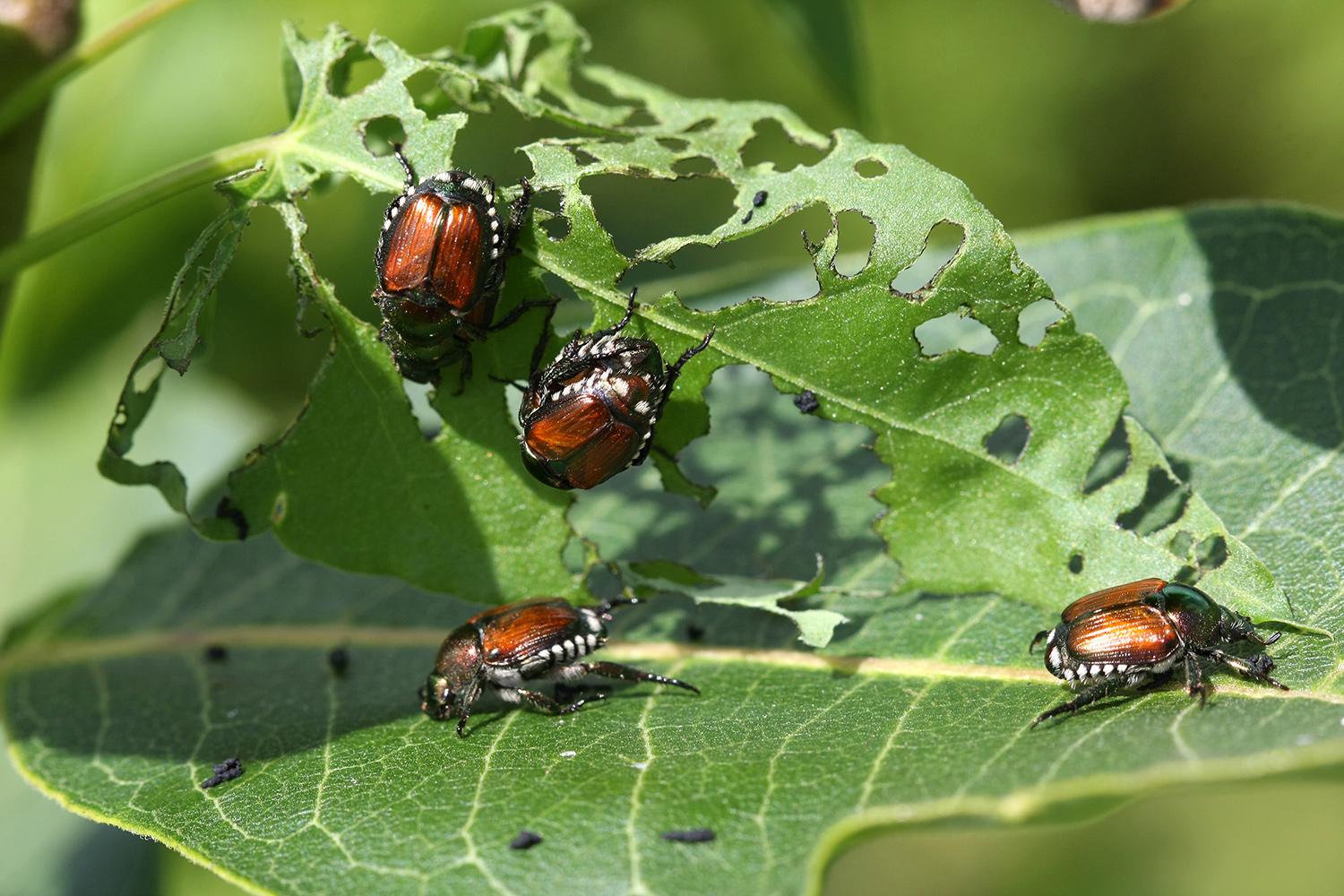
An individual Japanese beetle doesn’t do that much damage while feeding on a plant, but they tend to congregate in large numbers and can easily defoliate shrubs and trees. These bugs are hard to get rid of, but there are steps you can take to control them. Keep in mind that the adult Japanese beetles are only around for a little over a month, so don’t automatically reach for harsh chemicals unless they become a serious problem.
Stages of Development
Beetles typically go through 4 stages of development. It’s important to know when they are passing through each stage in your climate because control methods are different for each stage.
The life stages for the Japanese Beetle are:
Egg: Small, oval, white eggs. These are laid in the soil. If moisture is sufficient, they will absorb it and enlarge, becoming rounder as they do.
Larvae: This is the white grub stage that is so familiar in lawns. Japanese beetle larvae have a V-shaped series of bristles on their raster (the underside of the tip of the abdomen.) Grubs will grow in length as they feed and mature.
Pupae: The pupae stage is where the grub starts to transform into a beetle. Japanese beetle pupae start out cream colored and age to a reddish brown.
Adult Beetle: The adult beetles are about 3/8 inch long, and the shell is a shiny, metallic green with copper-brown wing covers. Adults emerge from the ground between May and June, depending on your area. They live for about 30 to 50 days.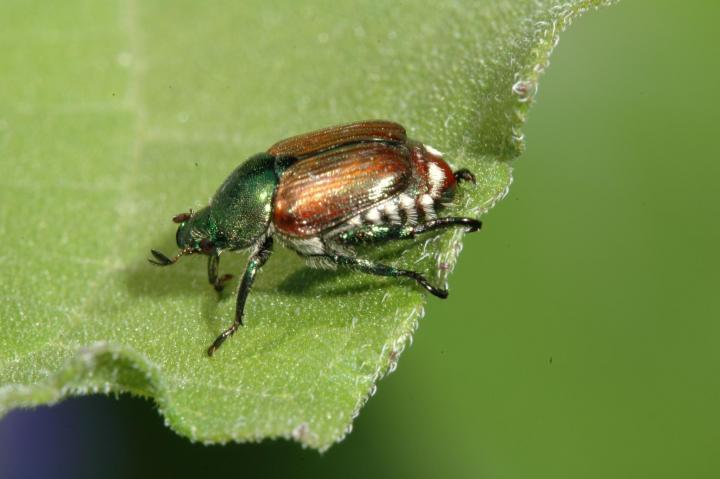
Life Cycle of the Japanese Beetle
The first beetles to emerge start to look for suitable plants to eat and start feeding immediately. They also send out an odor known as a congregation pheromone to signal later emerging beetles where to go. Mating starts soon after.
The females will feed on your plants for a couple of days and then burrow into the soil to lay their eggs. Shortly after, they will return to feeding and mating and start the cycle all over again. By the end of the season, each female Japanese beetle will have laid about 50 eggs.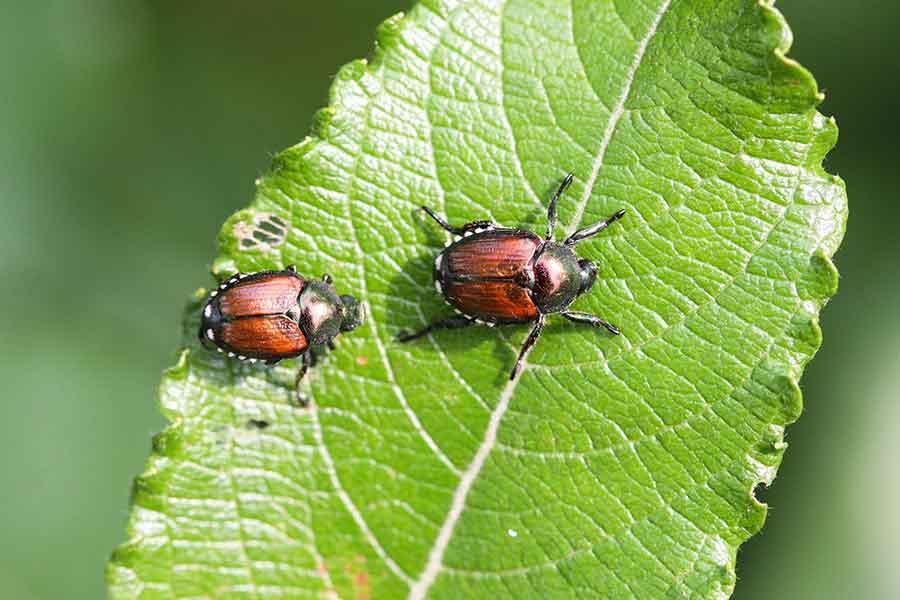
Eggs develop at different rates in different soil temperatures, developing most rapidly in warm soils of about 80 to 90 degrees F. Once they develop into larvae, they will move up toward the surface of the soil and start feeding on roots and organic matter. This is why grub control is usually applied in late summer to fall. The pesticide needs to be applied while the grubs are feeding on the grass roots.
As the soil cools and the grubs mature, they start moving back down deeper into the soil for winter. They’ll stay there until the soil warms in the spring, at which time they burrow back up toward the surface where they’ll pupate and eventually emerge as adults.
What Plants do Japanese Beetles Eat?
There’s a wide smorgasbord of plants for Japanese beetles to feast on, over 300 varieties of trees, shrubs and non-woody plants. Some of their favorites include roses, maples, elms, grapes and crab apples. However, they also feed on weeds like poison ivy and bracken.
How to Control Adult Japanese Beetles
It’s impossible to get rid of Japanese beetles entirely. More will fly in as the current crop are killed. There aren’t many natural controls for adult Japanese beetles. Birds aren’t partial to them, and although some predatory wasps and flies have been imported, their population isn’t large enough yet to control the Japanese beetle problem.
The most effective natural control is to go into your garden with a jar of soapy water and knock the beetles into it. Japanese beetles feed in groups, starting at the top of plants, so it’s pretty easy to fill a jar with them.
Insecticidal soap will kill adult Japanese beetles only if it is sprayed directly on the beetle. It does not have any residual effect, meaning that beetles that aren’t sprayed directly won’t be harmed.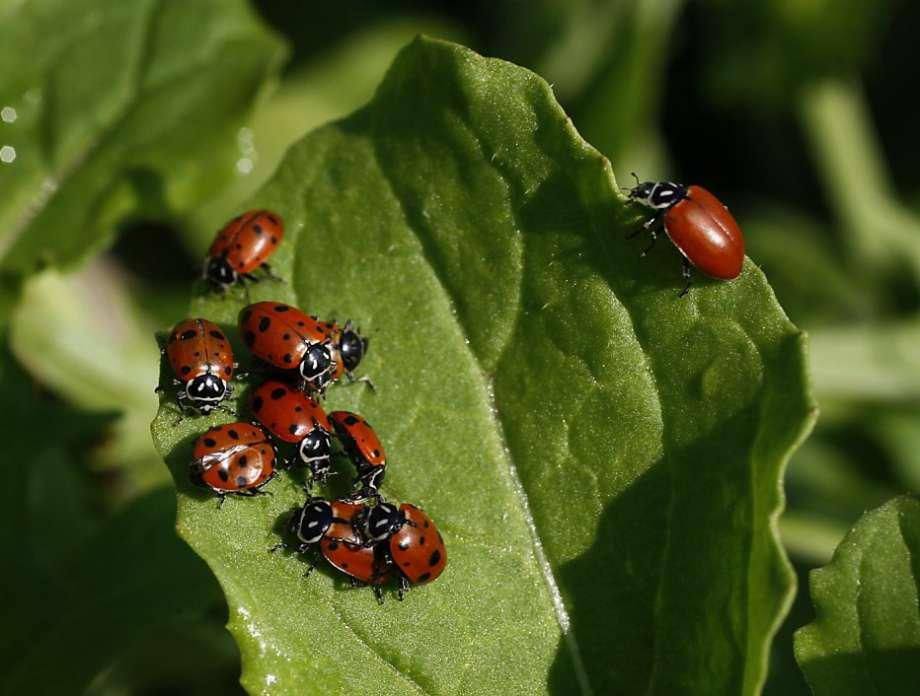
A word of caution about the pheromone beetle traps. They will attract beetles; you’ll probably wind up with more beetles coming into your yard than you would have without the trap. The original intention of the traps was to track when and how many Japanese beetles were in the area, not as a means of eradication.
Finally, if you have repeated intense infestations, you should check your soil in late summer to see if you have a large grub population. Lift a 1 square foot section of turf. If there are more than a dozen grubs in this small area, consider treating your lawn with some type of grub control. However, not every garden that has a Japanese beetle problem is associated with a lawn full of grubs. The beetles can hatch in your neighbor's lawn and find your tasty garden with very little effort.
More Toxic Controls (to Be Used With Caution)
There are several insecticides labeled for use on adult Japanese beetles. These sprays will kill on contact and also have some residual effect. Keep in mind that these sprays will kill more than just the Japanese beetles, so use them only for extreme infestations. And again, Japanese beetles are only a pest for a little over a month, so don’t overreact. Always read and follow label directions when using any pesticide.

An individual Japanese beetle doesn’t do that much damage while feeding on a plant, but they tend to congregate in large numbers and can easily defoliate shrubs and trees. These bugs are hard to get rid of, but there are steps you can take to control them. Keep in mind that the adult Japanese beetles are only around for a little over a month, so don’t automatically reach for harsh chemicals unless they become a serious problem.

Stages of Development
Beetles typically go through 4 stages of development. It’s important to know when they are passing through each stage in your climate because control methods are different for each stage.
The life stages for the Japanese Beetle are:
Egg: Small, oval, white eggs. These are laid in the soil. If moisture is sufficient, they will absorb it and enlarge, becoming rounder as they do.
Larvae: This is the white grub stage that is so familiar in lawns. Japanese beetle larvae have a V-shaped series of bristles on their raster (the underside of the tip of the abdomen.) Grubs will grow in length as they feed and mature.
Pupae: The pupae stage is where the grub starts to transform into a beetle. Japanese beetle pupae start out cream colored and age to a reddish brown.
Adult Beetle: The adult beetles are about 3/8 inch long, and the shell is a shiny, metallic green with copper-brown wing covers. Adults emerge from the ground between May and June, depending on your area. They live for about 30 to 50 days.

Life Cycle of the Japanese Beetle
The first beetles to emerge start to look for suitable plants to eat and start feeding immediately. They also send out an odor known as a congregation pheromone to signal later emerging beetles where to go. Mating starts soon after.
The females will feed on your plants for a couple of days and then burrow into the soil to lay their eggs. Shortly after, they will return to feeding and mating and start the cycle all over again. By the end of the season, each female Japanese beetle will have laid about 50 eggs.

Eggs develop at different rates in different soil temperatures, developing most rapidly in warm soils of about 80 to 90 degrees F. Once they develop into larvae, they will move up toward the surface of the soil and start feeding on roots and organic matter. This is why grub control is usually applied in late summer to fall. The pesticide needs to be applied while the grubs are feeding on the grass roots.
As the soil cools and the grubs mature, they start moving back down deeper into the soil for winter. They’ll stay there until the soil warms in the spring, at which time they burrow back up toward the surface where they’ll pupate and eventually emerge as adults.

What Plants do Japanese Beetles Eat?
There’s a wide smorgasbord of plants for Japanese beetles to feast on, over 300 varieties of trees, shrubs and non-woody plants. Some of their favorites include roses, maples, elms, grapes and crab apples. However, they also feed on weeds like poison ivy and bracken.
How to Control Adult Japanese Beetles
It’s impossible to get rid of Japanese beetles entirely. More will fly in as the current crop are killed. There aren’t many natural controls for adult Japanese beetles. Birds aren’t partial to them, and although some predatory wasps and flies have been imported, their population isn’t large enough yet to control the Japanese beetle problem.

The most effective natural control is to go into your garden with a jar of soapy water and knock the beetles into it. Japanese beetles feed in groups, starting at the top of plants, so it’s pretty easy to fill a jar with them.
Insecticidal soap will kill adult Japanese beetles only if it is sprayed directly on the beetle. It does not have any residual effect, meaning that beetles that aren’t sprayed directly won’t be harmed.

A word of caution about the pheromone beetle traps. They will attract beetles; you’ll probably wind up with more beetles coming into your yard than you would have without the trap. The original intention of the traps was to track when and how many Japanese beetles were in the area, not as a means of eradication.
Finally, if you have repeated intense infestations, you should check your soil in late summer to see if you have a large grub population. Lift a 1 square foot section of turf. If there are more than a dozen grubs in this small area, consider treating your lawn with some type of grub control. However, not every garden that has a Japanese beetle problem is associated with a lawn full of grubs. The beetles can hatch in your neighbor's lawn and find your tasty garden with very little effort.

More Toxic Controls (to Be Used With Caution)
There are several insecticides labeled for use on adult Japanese beetles. These sprays will kill on contact and also have some residual effect. Keep in mind that these sprays will kill more than just the Japanese beetles, so use them only for extreme infestations. And again, Japanese beetles are only a pest for a little over a month, so don’t overreact. Always read and follow label directions when using any pesticide.
0
0
文章
Dummer. ゛☀
2017年09月13日

If you suspect a lace bug problem in your flower garden, get out your magnifying lens, because these garden pests are only about 1/8 of an inch long. Under magnification, you can see where these bugs got their name: their transparent wings form a lacy shield over their square shaped bodies.
Identify Lace Bug Damage
In the flower garden, the most likely victims of lace bugs are azalea bushes. Lace bugs especially seek out azaleas growing in sunny spots.
Lace bugs and their larvae feed on azaleas and other flowering plants and shrubs throughout the growing season, using their sharp mouthparts to pierce plant foliage and suck the juices from leaves. If your flowers are infested with lace bugs, you might notice:
Yellow stippling on leaves
White stippling on leaves
Evidence of leaf curl
Browning of leaves during active growth
Premature leaf drop
Lace Bug Life Cycle
Like many bugs, lace bugs begin their life cycle as larvae. The female lace bug inserts the eggs into the leaves of host plants, so a food source is available to newly hatched larvae. The larvae are very tiny and difficult to see, but they are usually present and feeding under leaves along with their parents. After about six weeks, the larvae mature into adult lace bugs, which can spawn several more generations of pests that season.
Organic Sprays for Lace Bug Control
In spite of their imposing shields, lace bugs are susceptible to most organic sprays.
The trick is to apply the sprays thoroughly to the undersides of leaves, where lace bugs feed and reproduce. Use these sprays to kill active lace bug adult and larvae populations:
Light horticultural oil
Insect soap
Neem
Spinosad
Cultural Control of Lace Bugs
As with all plants, those under stress make the tastiest meal for insect pests.
Ensure your plants can shrug off minor lace bug attacks by keeping them healthy. You may as well hang up a “dine here” neon sign if you allow your azalea, a woodland shrub, to bake in full sun. Dry soil and an absence of mulch also create conditions that pique the interest of lace bugs. Dappled shade or morning sun, regular irrigation, and a 3-inch layer of organic mulch keep plants vigorous and pest-free.
Beneficial Insects That Kill Lace Bugs
Many predators feed on lace bugs, reducing your need to spray insecticides on your flowering plants. Natural lace bug enemies include:
Assassin bugs
Lacewings
Ladybugs
Pirate bugs
Predatory mites
Spiders
If you want to provide a beneficial bug-friendly habitat to attract these natural predators, eliminate the use of insecticide sprays. Insecticides not only kill beneficial insects, but they eliminate the food source of beneficial bugs, forcing them to seek greener pastures.
Conventional Pesticides to Control Lace Bugs
If lace bug swarms are turning your flowering oasis into a withered graveyard, it might be time to break out some conventional chemical pesticides. A benefit of these broad-spectrum sprays is their residual effect, helping to kill multiple generations of lace bugs.
Use any of these sprays to kill lace bugs:
Carbaryl, sold under the brand name Sevin
Imidacloprid, see below
Malathion, marketed by Ortho, Hi-Yield, and Spectracide
Pyrethroids, including Bonide Eight Vegetable Fruit, & Flower Spray; Monterey Bug Buster; and Ortho Bug-B-Gon
Use any of these sprays to kill lace bugs:
Carbaryl, sold under the brand name Sevin
Imidacloprid, see below
Malathion, marketed by Ortho, Hi-Yield, and Spectracide
Pyrethroids, including Bonide Eight Vegetable Fruit, & Flower Spray; Monterey Bug Buster; and Ortho Bug-B-Gon
Of these conventional sprays, only the imidacloprid is systemic, meaning the plant takes up the chemical, making it rain proof. Homeowners can shop for imidacloprid under the brand name Merit or Bayer Advanced Garden Tree & Shrub Insect Control.

Identify Lace Bug Damage
In the flower garden, the most likely victims of lace bugs are azalea bushes. Lace bugs especially seek out azaleas growing in sunny spots.
Lace bugs and their larvae feed on azaleas and other flowering plants and shrubs throughout the growing season, using their sharp mouthparts to pierce plant foliage and suck the juices from leaves. If your flowers are infested with lace bugs, you might notice:
Yellow stippling on leaves
White stippling on leaves
Evidence of leaf curl
Browning of leaves during active growth
Premature leaf drop
Lace Bug Life Cycle
Like many bugs, lace bugs begin their life cycle as larvae. The female lace bug inserts the eggs into the leaves of host plants, so a food source is available to newly hatched larvae. The larvae are very tiny and difficult to see, but they are usually present and feeding under leaves along with their parents. After about six weeks, the larvae mature into adult lace bugs, which can spawn several more generations of pests that season.

Organic Sprays for Lace Bug Control
In spite of their imposing shields, lace bugs are susceptible to most organic sprays.
The trick is to apply the sprays thoroughly to the undersides of leaves, where lace bugs feed and reproduce. Use these sprays to kill active lace bug adult and larvae populations:
Light horticultural oil
Insect soap
Neem
Spinosad
Cultural Control of Lace Bugs
As with all plants, those under stress make the tastiest meal for insect pests.
Ensure your plants can shrug off minor lace bug attacks by keeping them healthy. You may as well hang up a “dine here” neon sign if you allow your azalea, a woodland shrub, to bake in full sun. Dry soil and an absence of mulch also create conditions that pique the interest of lace bugs. Dappled shade or morning sun, regular irrigation, and a 3-inch layer of organic mulch keep plants vigorous and pest-free.

Beneficial Insects That Kill Lace Bugs
Many predators feed on lace bugs, reducing your need to spray insecticides on your flowering plants. Natural lace bug enemies include:
Assassin bugs
Lacewings
Ladybugs
Pirate bugs
Predatory mites
Spiders
If you want to provide a beneficial bug-friendly habitat to attract these natural predators, eliminate the use of insecticide sprays. Insecticides not only kill beneficial insects, but they eliminate the food source of beneficial bugs, forcing them to seek greener pastures.

Conventional Pesticides to Control Lace Bugs
If lace bug swarms are turning your flowering oasis into a withered graveyard, it might be time to break out some conventional chemical pesticides. A benefit of these broad-spectrum sprays is their residual effect, helping to kill multiple generations of lace bugs.
Use any of these sprays to kill lace bugs:
Carbaryl, sold under the brand name Sevin
Imidacloprid, see below
Malathion, marketed by Ortho, Hi-Yield, and Spectracide
Pyrethroids, including Bonide Eight Vegetable Fruit, & Flower Spray; Monterey Bug Buster; and Ortho Bug-B-Gon

Use any of these sprays to kill lace bugs:
Carbaryl, sold under the brand name Sevin
Imidacloprid, see below
Malathion, marketed by Ortho, Hi-Yield, and Spectracide
Pyrethroids, including Bonide Eight Vegetable Fruit, & Flower Spray; Monterey Bug Buster; and Ortho Bug-B-Gon
Of these conventional sprays, only the imidacloprid is systemic, meaning the plant takes up the chemical, making it rain proof. Homeowners can shop for imidacloprid under the brand name Merit or Bayer Advanced Garden Tree & Shrub Insect Control.
0
0
文章
素雅
2017年09月12日

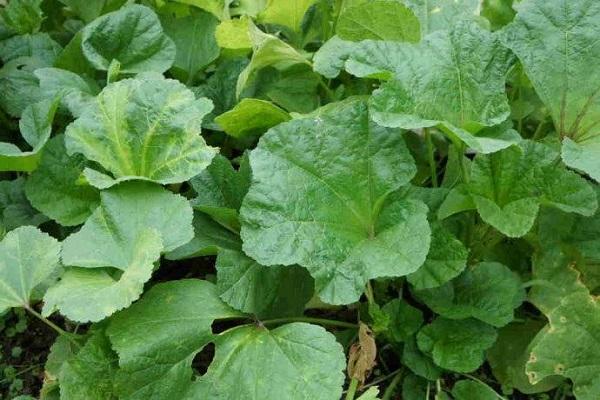
生长环境
冬寒菜喜欢阴凉的环境,除了炎热的酷夏与寒冷的冬季,其它时间随时可以种植。冬寒菜适合在15度至20度的温度中生长。3月份、8月份下旬、9月份上旬是种植冬寒菜的最佳时间。
盆土选择
选择的花盆若是直径是20厘米的,那么大约可以种10粒至12粒的种子。把种子轻轻按在土壤里即可,上面覆盖一层约1厘米厚的土壤。浇透水,但要注意别把种子冲出来。若温度过低时,可把花盆移到室内放置,温度过高时,要注意通风,降温。
发芽
3月份撒种种植,大约8天至10天便可发出萌芽。8月份下旬、9月份上旬撒种种植,发芽的时间会更短。
定植
在冬寒菜的小苗长出4片至6片叶子时,就可以把稍小的、多余的苗拔除,眔下壮硕的小苗。
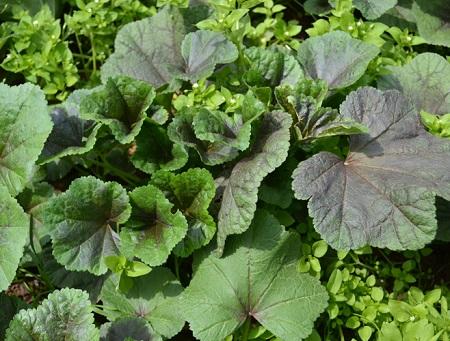
肥水管理
在冬寒菜为小苗时,要少浇水,少施肥;在苗生长到较大时,可以增加水量也肥量。
病虫害防治
家庭盆栽的冬寒菜,病害虫极少,只有害虫会出现,但可以人工捕杀。
采收
如果是3月份种植的,约70天至80天,冬寒菜生长到18厘米高时,便可采收,7天至10天就可以采收一次。8月份下旬、9月份上旬种植的,约50天至60天,同样冬寒菜生长到18厘米高时,便可采收,6天至9天可采收一次。
0
1
文章
权问薇
2017年09月03日

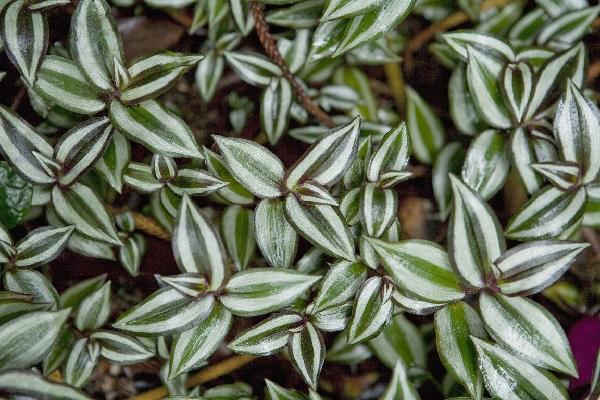
先来了解一下#吊竹梅 的特点
喜欢较湿润的环境,切不可过于干燥;怕强光直晒;抗寒能力非常差,温度不可低于8度以下;抗热能力也非常差;在温度14度以上时可以正常生长;非常不耐旱。

吊竹梅需要多久浇一次水?
吊竹梅在生长时期,建议一天浇一次水,浇水时要避免不要出现积水现象;另外可以在叶面上用喷壶喷洒水雾,这样即可以让环境的保持潮湿,又可以加快枝叶生长的速度。
吊竹梅在夏季也要多浇水,夏季温度较高,水蒸发的也比较快,为了保持土壤的潮湿,就要加大浇水次数,建议少一天最浇一次水,浇水时要注意不要出现积水现象。
吊竹梅在其它时期不需要每天都进行浇水,若浇水过于频繁,则会引起植株叶子大面积的泛黄。可以延长至3天到5天浇水一次。或者观察其土壤的情况,土壤下2厘米处若是偏干状态,则需要浇水了。
吊竹梅在冬季,属于休眠状态,这时它对水的需求会降低很多,则要降低浇水的量。这时还要注意防冻,小心浇进去的水冻成冰。

2
1
文章
Dummer. ゛☀
2017年09月02日

Plum leaf sand cherry, also referred to as purple leaf sand cherry plants, is a medium sized ornamental shrub or small tree that when mature reaches a height of approximately 8 feet tall by 8 feet wide. This easy care plant makes a great addition to the landscape.
About Plum Leaf Sand Cherry
Purple leaf sand cherry (Prunus x cistena) is a member of the Rose family. Prunus is Latin for ‘plum’ while cistena is the Sioux word for ‘baby’ in reference to its smallish size. The “x” is indicative of the shrub’s hybridism.
This Prunus hybrid is useful as an ornamental specimen due to its beautiful red, maroon, or purple foliage. The shrub grows at a moderate rate and is suitable in USDA zones 2-8. The parent plants of sandcherry bush hail from Western Asia (Prunus cerasifera) and the Northeastern United States (Prunus pumila).
This purplish-red leafed plant has an oval growth habit gradually maturing into an arched form and opening out from the center of the shrub. The stunning 2-inch long, serrated foliage emerges crimson-purple and remains throughout the summer, gradually changing to a green-bronze hue in the fall. Around early spring, the plant’s pink buds open into whitish-pink flowers – the same time as the red foliage. The innocuous blooms become small black-purple fruit barely noticeable without contrast to the purple foliage in July. The multiple gray-brown trunks are prone to trunk fissuring and cankers, which ooze sap.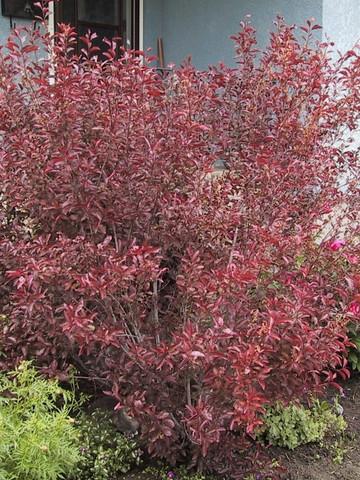
How to Grow a Purple Leaf Sand Cherry
This specimen is urban tolerant and establishes rapidly to lend a brilliant pop of color to the landscape. So how do you grow a purple leaf sand cherry? Sand cherry is readily available through the local nursery and/or propagated via rooted stem cuttings. Sand cherry is sensitive to being transplanted in the autumn, so extra care should be taken in amending the soil, fertilizing, mulching heavily and watering thoroughly. Ideally, you should plant the purple leaf sand cherry in full to partial sun exposure in moist, well-draining soil. However, the sand cherry bush is adaptable to lesser soils, drought, heat and over aggressive pruning.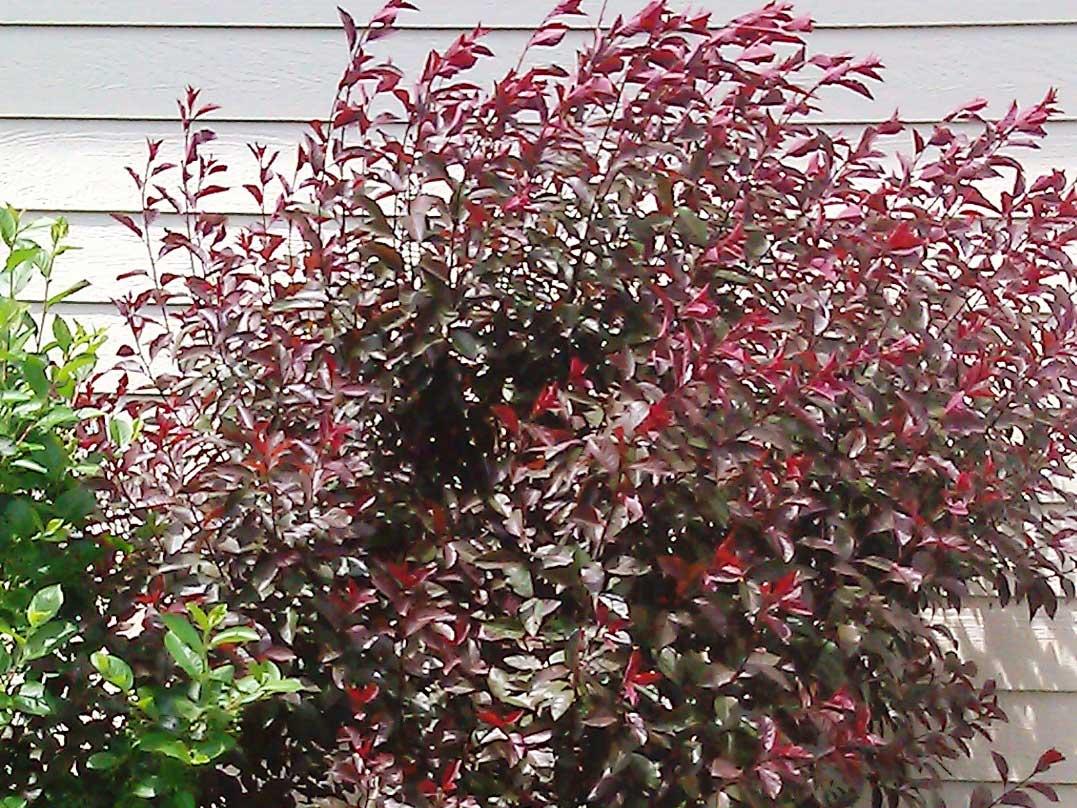
Sand Cherry Plant Care
Because, the sand cherry is a member of the Rose family, it is susceptible to several diseases, such as trunk canker, and pests, like borers and Japanese beetle assaults in mid-summer. It also has a short lifespan at between 10 to 15 years primarily due to assault by pests or diseases. Other than these issues, the sand cherry plant care is relatively fuss free and is tolerant of a variety of conditions – hardy in cold winters and hot summers. Prune the sand cherry bush to remove heavy branching that will weigh the plant down. It can even be pruned into a formal hedge or used in borders, at entranceways or in group plantings.

About Plum Leaf Sand Cherry
Purple leaf sand cherry (Prunus x cistena) is a member of the Rose family. Prunus is Latin for ‘plum’ while cistena is the Sioux word for ‘baby’ in reference to its smallish size. The “x” is indicative of the shrub’s hybridism.
This Prunus hybrid is useful as an ornamental specimen due to its beautiful red, maroon, or purple foliage. The shrub grows at a moderate rate and is suitable in USDA zones 2-8. The parent plants of sandcherry bush hail from Western Asia (Prunus cerasifera) and the Northeastern United States (Prunus pumila).

This purplish-red leafed plant has an oval growth habit gradually maturing into an arched form and opening out from the center of the shrub. The stunning 2-inch long, serrated foliage emerges crimson-purple and remains throughout the summer, gradually changing to a green-bronze hue in the fall. Around early spring, the plant’s pink buds open into whitish-pink flowers – the same time as the red foliage. The innocuous blooms become small black-purple fruit barely noticeable without contrast to the purple foliage in July. The multiple gray-brown trunks are prone to trunk fissuring and cankers, which ooze sap.

How to Grow a Purple Leaf Sand Cherry
This specimen is urban tolerant and establishes rapidly to lend a brilliant pop of color to the landscape. So how do you grow a purple leaf sand cherry? Sand cherry is readily available through the local nursery and/or propagated via rooted stem cuttings. Sand cherry is sensitive to being transplanted in the autumn, so extra care should be taken in amending the soil, fertilizing, mulching heavily and watering thoroughly. Ideally, you should plant the purple leaf sand cherry in full to partial sun exposure in moist, well-draining soil. However, the sand cherry bush is adaptable to lesser soils, drought, heat and over aggressive pruning.

Sand Cherry Plant Care
Because, the sand cherry is a member of the Rose family, it is susceptible to several diseases, such as trunk canker, and pests, like borers and Japanese beetle assaults in mid-summer. It also has a short lifespan at between 10 to 15 years primarily due to assault by pests or diseases. Other than these issues, the sand cherry plant care is relatively fuss free and is tolerant of a variety of conditions – hardy in cold winters and hot summers. Prune the sand cherry bush to remove heavy branching that will weigh the plant down. It can even be pruned into a formal hedge or used in borders, at entranceways or in group plantings.
1
1
文章
Dummer. ゛☀
2017年09月02日

The pindo palm (Butia capitata) is a thick, slow growing palm tree that is popular in zones 8 through 11, where it’s winter hardy. Palm trees come in a wide variety of shapes, sizes, and species, and it’s not always clear how much each tree needs to be pruned, if at all. Keep reading to learn more about how and when to prune a pindo palm tree.
Do I Prune a Pindo Palm?
Do pindo palms need to be pruned? If you are lucky enough to have a pindo palm growing in your garden, you might be tempted to cut it back. As the palm grows, it does have a tendency to get a little ragged looking. Each year the tree will produce eight new leaves. The leaves actually consist of a 4 foot (1.2 m.) long stem that’s covered in spines and 10 inch (25 cm.) long leaves that grow out of it in opposite directions. As these branches of leaves age, they curl down toward the trunk of the tree. Eventually, the older leaves will yellow and finally brown. While it may be tempting, you should not cut back the leaves unless they are completely dead, and even then you need to be careful about it.
How to Prune a Pindo Palm
Cutting a pindo palm back should only be done if the leaves are completely brown. Even then, make sure not to cut them down flush with the trunk. The rough appearance of a pindo palm’s trunk is actually made up of the stubs of dead leaves. Make sure to leave several inches of stem or you risk opening up the tree to infection.
One case in which cutting a pindo palm back is completely okay is when the tree produces flowers. If left in place, the flowers will give way to fruit that, while edible, is often a nuisance when it drops. You can cut the faded flower stalks off to avoid the trouble of fruit litter.

Do I Prune a Pindo Palm?
Do pindo palms need to be pruned? If you are lucky enough to have a pindo palm growing in your garden, you might be tempted to cut it back. As the palm grows, it does have a tendency to get a little ragged looking. Each year the tree will produce eight new leaves. The leaves actually consist of a 4 foot (1.2 m.) long stem that’s covered in spines and 10 inch (25 cm.) long leaves that grow out of it in opposite directions. As these branches of leaves age, they curl down toward the trunk of the tree. Eventually, the older leaves will yellow and finally brown. While it may be tempting, you should not cut back the leaves unless they are completely dead, and even then you need to be careful about it.

How to Prune a Pindo Palm
Cutting a pindo palm back should only be done if the leaves are completely brown. Even then, make sure not to cut them down flush with the trunk. The rough appearance of a pindo palm’s trunk is actually made up of the stubs of dead leaves. Make sure to leave several inches of stem or you risk opening up the tree to infection.

One case in which cutting a pindo palm back is completely okay is when the tree produces flowers. If left in place, the flowers will give way to fruit that, while edible, is often a nuisance when it drops. You can cut the faded flower stalks off to avoid the trouble of fruit litter.
0
0
文章
Colour_
2017年09月01日

金凤花(学名:Caesalpinia pulcherrima (L.) Sw.):大灌木或小乔木;高达3米,枝绿或粉绿色,有疏刺。二回羽状复叶4对至8对,对生,小叶7对至11对,长椭圆形或倒卵形,基部歪斜,顶端凹缺,小叶柄很短。总状花序顶生或腋生,花瓣圆形具柄, 橙或黄色,花梗长达7厘米。荚果黑色。种子6颗至9颗。花果期几乎全年。
原产地西印度群岛,中国云南、广西、广东和台湾均有栽培。为热带地区有价值的观赏树木之一。
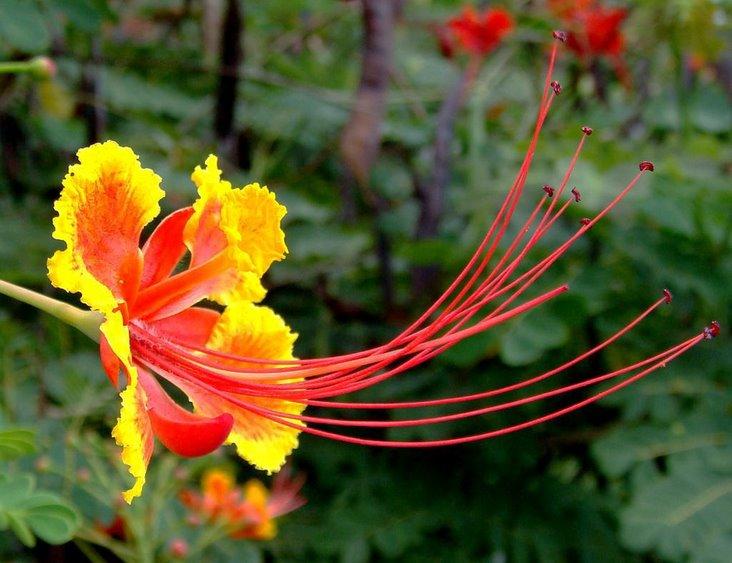

金凤花的繁殖方式
金凤花是用种子繁殖,从6月中旬至12月中旬,荚果陆续成熟,以9-10月份为成熟盛期,采集盛期成熟的果荚,置日光下暴晒,开裂后脱出种子,可以随采随播种,幼苗防寒越冬,也可将种子储藏翌年春播,种子千粒重约132克,发芽时气温需在20℃以上,以春季3月中下旬播种较宜,播前用60℃温水浸种,冷却后继续浸泡12小时,发芽快速,一般播种后三天即开始发芽,一周内发芽结束,发芽率约为60%。
用条播法,幼苗生长速度中等,苗期施氮肥2-3次追苗,10月份以后,停施氮肥,施钾肥一致,促使早期木质化,冬季注意覆盖防霜,1年生苗可出圃定植,2年生幼树,即可开花供观赏。如发生叶斑病,可用50%多菌灵可湿性粉500倍液防治。
金凤花的栽培技术
对肥力的要求不甚高,一般肥力中等、磷钾肥较高的土壤,开花繁茂,色泽亦鲜艳,水分充足,氮肥较高的土壤枝叶繁茂,开花亦较多,但色泽欠鲜艳,种植时宜施腐熟饼肥或垃圾作基肥,花前及开花盛期,追施磷钾肥,树形不甚美观,但具萌芽性,管理中可用截干或修枝整形,促使树冠丰满,也可3-5株种植于一处,以提高观赏效果。
病虫防治
白粉病
症状此病主要发生在叶片和嫩梢上。一般在6月开始发生,7月份以后叶面布满白色粉层。随后,在白粉层中形成黄色小粒点,颜色逐渐变深,最后呈黑褐色。传染途径病菌在病株残体和种子内越冬。翌年,当环境适宜时,病菌借风雨传播。8-9月为发病盛期。
防治方法:
栽植不过密,适当通风,加强肥水管理,增强植株的抗病力。将病叶、病株清除,集中销毁,减少传染源。
发病期间用15%粉锈宁可湿性粉剂1000-1200倍液,或70%甲基托布津可湿性粉剂1000倍液防治。在32℃以上的高温下避免喷药,以免发生药害。
褐斑病
金凤花褐斑病又称风仙花叶斑病,在中国南北各地均有发生。症状病害主要发生在叶片上。叶面病斑初为浅黄褐色小点,后扩展成圆形或椭圆形,以后中央变成淡褐色,边缘褐色,具有不明显的轮纹。严重患病的叶片上,病斑连片,导致叶片变得枯黄,直至植株死亡。传染途径病菌在风仙花病残体及土壤植物碎片上越冬。翌年当环境条件适宜时,病菌借风雨飞散传播。高温多雨的季节,易发病。
防治方法:
金凤花喜肥沃的砂质壤土,不耐涝。因此,种植以砂质壤土为宜,以利排水;盆栽金凤花,雨后应及时倒盆。秋末应将病叶、病株集中销毁,减少来年传染源。
发病初期用25%多菌灵可湿性粉剂300-600倍液,或50%甲基托布津100倍液,或75%百菌清1000倍液防治。
立枯病
症状病菌主要侵染根茎部,致病部变黑或缢缩,潮湿时其上生白色霉状物,植株染病后,数天内即见叶萎蔫、干枯,继而造成整株死亡。
传播途径:主要以菌丝或菌核的形式在土壤或病残体内越冬,土壤中的菌丝营腐生生活,不休眠。在田间,主要靠接触传染,即植株的根、茎、叶接触病土时,便会被土中的菌丝侵染,在有水膜的条件下,与病部接触的健叶即染病。此外,种子、农具及带菌堆肥等都可使病害传播蔓延。
防治方法:在发病初期拔除病株后喷洒75%百菌清可湿性粉剂600倍液,或60%多·福可湿性粉剂500倍液、20%甲基立枯磷乳油1200倍液。
原产地西印度群岛,中国云南、广西、广东和台湾均有栽培。为热带地区有价值的观赏树木之一。


金凤花的繁殖方式
金凤花是用种子繁殖,从6月中旬至12月中旬,荚果陆续成熟,以9-10月份为成熟盛期,采集盛期成熟的果荚,置日光下暴晒,开裂后脱出种子,可以随采随播种,幼苗防寒越冬,也可将种子储藏翌年春播,种子千粒重约132克,发芽时气温需在20℃以上,以春季3月中下旬播种较宜,播前用60℃温水浸种,冷却后继续浸泡12小时,发芽快速,一般播种后三天即开始发芽,一周内发芽结束,发芽率约为60%。
用条播法,幼苗生长速度中等,苗期施氮肥2-3次追苗,10月份以后,停施氮肥,施钾肥一致,促使早期木质化,冬季注意覆盖防霜,1年生苗可出圃定植,2年生幼树,即可开花供观赏。如发生叶斑病,可用50%多菌灵可湿性粉500倍液防治。
金凤花的栽培技术
对肥力的要求不甚高,一般肥力中等、磷钾肥较高的土壤,开花繁茂,色泽亦鲜艳,水分充足,氮肥较高的土壤枝叶繁茂,开花亦较多,但色泽欠鲜艳,种植时宜施腐熟饼肥或垃圾作基肥,花前及开花盛期,追施磷钾肥,树形不甚美观,但具萌芽性,管理中可用截干或修枝整形,促使树冠丰满,也可3-5株种植于一处,以提高观赏效果。
病虫防治
白粉病
症状此病主要发生在叶片和嫩梢上。一般在6月开始发生,7月份以后叶面布满白色粉层。随后,在白粉层中形成黄色小粒点,颜色逐渐变深,最后呈黑褐色。传染途径病菌在病株残体和种子内越冬。翌年,当环境适宜时,病菌借风雨传播。8-9月为发病盛期。
防治方法:
栽植不过密,适当通风,加强肥水管理,增强植株的抗病力。将病叶、病株清除,集中销毁,减少传染源。
发病期间用15%粉锈宁可湿性粉剂1000-1200倍液,或70%甲基托布津可湿性粉剂1000倍液防治。在32℃以上的高温下避免喷药,以免发生药害。
褐斑病
金凤花褐斑病又称风仙花叶斑病,在中国南北各地均有发生。症状病害主要发生在叶片上。叶面病斑初为浅黄褐色小点,后扩展成圆形或椭圆形,以后中央变成淡褐色,边缘褐色,具有不明显的轮纹。严重患病的叶片上,病斑连片,导致叶片变得枯黄,直至植株死亡。传染途径病菌在风仙花病残体及土壤植物碎片上越冬。翌年当环境条件适宜时,病菌借风雨飞散传播。高温多雨的季节,易发病。
防治方法:
金凤花喜肥沃的砂质壤土,不耐涝。因此,种植以砂质壤土为宜,以利排水;盆栽金凤花,雨后应及时倒盆。秋末应将病叶、病株集中销毁,减少来年传染源。
发病初期用25%多菌灵可湿性粉剂300-600倍液,或50%甲基托布津100倍液,或75%百菌清1000倍液防治。
立枯病
症状病菌主要侵染根茎部,致病部变黑或缢缩,潮湿时其上生白色霉状物,植株染病后,数天内即见叶萎蔫、干枯,继而造成整株死亡。
传播途径:主要以菌丝或菌核的形式在土壤或病残体内越冬,土壤中的菌丝营腐生生活,不休眠。在田间,主要靠接触传染,即植株的根、茎、叶接触病土时,便会被土中的菌丝侵染,在有水膜的条件下,与病部接触的健叶即染病。此外,种子、农具及带菌堆肥等都可使病害传播蔓延。
防治方法:在发病初期拔除病株后喷洒75%百菌清可湿性粉剂600倍液,或60%多·福可湿性粉剂500倍液、20%甲基立枯磷乳油1200倍液。
0
1
文章
Dummer. ゛☀
2017年08月31日

From the little 8-foot Japanese maple to the towering sugar maple that can reach heights of 100 feet or more, the Acer family offers a tree just the right size for every situation. Find out about some of the most popular maple tree varieties in this article.
Types of Acer Maple Trees
Maple trees are members of the genus Acer, which includes a lot of variety in size, shape, color and growth habit. With all of the variations, it’s hard to pinpoint a few obvious features that make a tree a maple. To make maple tree identification a little easier, let’s begin by dividing them into two main groups: Hard and soft maples.
One distinction between the two maple tree types is the rate of growth. Hard maples grow very slowly and live a long time. These trees are important to the lumber industry and include black maples and sugar maples, known for their superior quality syrup.
All maples have leaves divided into three, five or seven lobes. The lobes on some maples are mere indentations in the leaves, while others have lobes so deeply divided that a single leaf can look like a cluster of individual, thin leaves. Hard maples usually have leaves with moderate indentations. They are dull green on top and a lighter color underneath. Soft maples include a wide variety of trees, such as red and silver maples. Their rapid growth results in a soft wood. Landscapers use these trees to get quick results, but they may become a problem in the landscape as they age. Quick growth results in brittle branches that break and fall easily, often causing property damage. They are subject to wood rot, and landowners have to pay the high cost of tree removal or risk collapse. Another thing that all maples have in common is their fruit, called samaras. They are essentially winged seeds that twirl to the ground when ripe, much to the delight of children who get caught in a shower of “whirlybirds.”
How to Identify Maple Trees
Here are a few distinguishing characteristics of some of the more common types of Acer maple trees:
Japanese Maple (Acer palmatum)
Highly ornamental trees, Japanese maples may only grow to 6 to 8 feet in cultivation but can reach heights of 40 to 50 feet in the wild Brilliant fall color The trees are often wider than they are tall
Red Maple (Acer rubrum)
Heights of 40 to 60 feet with a width of 25 to 35 feet in cultivation but may reach over 100 feet in the wild Bright red, yellow and orange fall color Red flowers and fruit The lower branches droop as the tree matures
Silver Maple (Acer saccharinum)
These trees grow 50 to 70 feet tall with canopies that are 35 to 50 feet wide The dark green leaves are silvery underneath, and they appear to glimmer in the wind Their shallow roots buckle sidewalks and foundations, making it nearly impossible to grow grass under the canopy
Sugar Maple (Acer saccharum)
This large tree grows 50 to 80 feet tall with a dense canopy that spreads 35 to 50 feet wide Attractive, pale yellow flowers bloom in spring Brilliant fall color with many shades on the tree at the same time

Types of Acer Maple Trees
Maple trees are members of the genus Acer, which includes a lot of variety in size, shape, color and growth habit. With all of the variations, it’s hard to pinpoint a few obvious features that make a tree a maple. To make maple tree identification a little easier, let’s begin by dividing them into two main groups: Hard and soft maples.
One distinction between the two maple tree types is the rate of growth. Hard maples grow very slowly and live a long time. These trees are important to the lumber industry and include black maples and sugar maples, known for their superior quality syrup.

All maples have leaves divided into three, five or seven lobes. The lobes on some maples are mere indentations in the leaves, while others have lobes so deeply divided that a single leaf can look like a cluster of individual, thin leaves. Hard maples usually have leaves with moderate indentations. They are dull green on top and a lighter color underneath. Soft maples include a wide variety of trees, such as red and silver maples. Their rapid growth results in a soft wood. Landscapers use these trees to get quick results, but they may become a problem in the landscape as they age. Quick growth results in brittle branches that break and fall easily, often causing property damage. They are subject to wood rot, and landowners have to pay the high cost of tree removal or risk collapse. Another thing that all maples have in common is their fruit, called samaras. They are essentially winged seeds that twirl to the ground when ripe, much to the delight of children who get caught in a shower of “whirlybirds.”

How to Identify Maple Trees
Here are a few distinguishing characteristics of some of the more common types of Acer maple trees:
Japanese Maple (Acer palmatum)
Highly ornamental trees, Japanese maples may only grow to 6 to 8 feet in cultivation but can reach heights of 40 to 50 feet in the wild Brilliant fall color The trees are often wider than they are tall

Red Maple (Acer rubrum)
Heights of 40 to 60 feet with a width of 25 to 35 feet in cultivation but may reach over 100 feet in the wild Bright red, yellow and orange fall color Red flowers and fruit The lower branches droop as the tree matures
Silver Maple (Acer saccharinum)
These trees grow 50 to 70 feet tall with canopies that are 35 to 50 feet wide The dark green leaves are silvery underneath, and they appear to glimmer in the wind Their shallow roots buckle sidewalks and foundations, making it nearly impossible to grow grass under the canopy

Sugar Maple (Acer saccharum)
This large tree grows 50 to 80 feet tall with a dense canopy that spreads 35 to 50 feet wide Attractive, pale yellow flowers bloom in spring Brilliant fall color with many shades on the tree at the same time
0
0
文章
Dummer. ゛☀
2017年08月30日

With white flowers that are shaped like bells, the Carolina silverbell tree (Halesia carolina) is an understory tree that grows frequently along streams in the southeastern United States. Hardy to USDA zones 4-8, this tree sports pretty, bell-shaped flowers from April through May. Trees range in height from 20 to 30 feet and have a 15- to 35-foot spread. Keep reading for information about growing Halesia silverbells.
How to Grow a Carolina Silverbell Tree
Growing Halesia silverbells is not overly difficult as long as you provide the right soil conditions. Moist and acidic soil that drains well is best. If your soil is not acidic, try adding iron sulfate, aluminum sulfate, sulfur or sphagnum peat moss. Amounts will vary depending on your location and how acidic your soil already is. Be sure to take a soil sample before amending. Container grown plants are recommended for best results. Propagation by seed is possible and it is best to gather seeds in the fall from a mature tree. Harvest around five to ten mature seedpods that do not have any physical signs of damage. Soak the seeds in sulfuric acid for eight hours followed by 21 hours of soaking in water. Wipe away deteriorated pieces from the pods.
Mix 2 parts compost with 2 parts potting soil and 1 part sand, and place into a flat or large pot. Plant the seeds about 2 inches deep and cover with soil. Then cover the top of each pot or flat with mulch. Water until moist and keep the soil moist at all times. Germination can take as long as two years. Rotate every two to three months between warm (70-80 F./21-27 C.) and cold (35 -42 F./2-6 C.) temperatures.
Choose a suitable location to plant your tree after the second year and provide an organic fertilizer when you plant and each spring thereafter as part of your Halesia tree care until it is well established.

How to Grow a Carolina Silverbell Tree
Growing Halesia silverbells is not overly difficult as long as you provide the right soil conditions. Moist and acidic soil that drains well is best. If your soil is not acidic, try adding iron sulfate, aluminum sulfate, sulfur or sphagnum peat moss. Amounts will vary depending on your location and how acidic your soil already is. Be sure to take a soil sample before amending. Container grown plants are recommended for best results. Propagation by seed is possible and it is best to gather seeds in the fall from a mature tree. Harvest around five to ten mature seedpods that do not have any physical signs of damage. Soak the seeds in sulfuric acid for eight hours followed by 21 hours of soaking in water. Wipe away deteriorated pieces from the pods.

Mix 2 parts compost with 2 parts potting soil and 1 part sand, and place into a flat or large pot. Plant the seeds about 2 inches deep and cover with soil. Then cover the top of each pot or flat with mulch. Water until moist and keep the soil moist at all times. Germination can take as long as two years. Rotate every two to three months between warm (70-80 F./21-27 C.) and cold (35 -42 F./2-6 C.) temperatures.

Choose a suitable location to plant your tree after the second year and provide an organic fertilizer when you plant and each spring thereafter as part of your Halesia tree care until it is well established.
0
0
文章
Dummer. ゛☀
2017年08月30日

If there ever was a flower you just had to grow, brugmansia is it. The plant is in the toxic Datura family so keep it away from children and pets, but the massive blooms are nearly worth any risk. The plant produces a season long display of 6- to 8-inch trumpet-shaped blooms in hues of pink, yellow and white. Knowing how to fertilize brugmansias will enhance and extend the parade of these brilliantly colored flowers.
Feeding Angel’s Trumpet
Brugmansia is also known as angel’s trumpet because of the large drooping blooms. The plant can grow to a massive shrub in good lighting and, with good care, up to 8-10 feet tall. The blooms release an intoxicating scent in the night air, adding to their angelic mien. Brugmansia is a voracious feeder and thrives when fed frequently.
Plant food enhances most plant’s growth by providing extra macro-nutrients not found in soil – nitrogen, phosphorus and potassium – which are commonly found NPK ratios on fertilizer products. N – The first number on any fertilizer formula is the nitrogen, which directs strong plant growth and stem and leaf formation. P – The second number is phosphorus, which assists with bloom and fruit production. K – The third number, potassium, enhances roots and overall plant health. The type of fertilizer for brugmansia depends upon the time of development. During initial growth, use a balanced fertilizer such as a 20-20-20. By the time buds begin to form, alternate with one higher in phosphorus to promote bigger, lustier blooms.
When to Feed Brugmansia Plants
Every two weeks is when to feed brugmansia according to the American Brugmansia and Datura Society. Angel’s trumpet requires high amounts of additional nutrients to achieve maximum size and blooms. Use the all-purpose fertilizer once per week during its start-up period, then begin the higher phosphorus formula once per week about 3 to 4 weeks before bloom time. The best type of fertilizer for brugmansia is a water soluble one, which is readily available for the plant to uptake. Start at half dilutions when the plant is little and graduate to the full dose once the plant is mature. Water any fertilizer in well.
How to Fertilize Brugmansias
Young brugmansia can take 2 to3 years to flower from a hybrid cross. Most nurseries sell them ready to bloom, but if you are self-propagating, your young plant will need special care. Besides the macro-nutrients your young plant needs:
Magnesium
Iron
Zinc
Copper
You can find these in a good all-purpose plant food starters. These are easy to apply either as a foliar drench or watered into soil. When young plants are ready to repot, use a time-release fertilizer mixed into the soil for slow, gradual nutrient release. Feeding angel’s trumpet frequently will result in big spectacular bloom shows all summer long.

Feeding Angel’s Trumpet
Brugmansia is also known as angel’s trumpet because of the large drooping blooms. The plant can grow to a massive shrub in good lighting and, with good care, up to 8-10 feet tall. The blooms release an intoxicating scent in the night air, adding to their angelic mien. Brugmansia is a voracious feeder and thrives when fed frequently.
Plant food enhances most plant’s growth by providing extra macro-nutrients not found in soil – nitrogen, phosphorus and potassium – which are commonly found NPK ratios on fertilizer products. N – The first number on any fertilizer formula is the nitrogen, which directs strong plant growth and stem and leaf formation. P – The second number is phosphorus, which assists with bloom and fruit production. K – The third number, potassium, enhances roots and overall plant health. The type of fertilizer for brugmansia depends upon the time of development. During initial growth, use a balanced fertilizer such as a 20-20-20. By the time buds begin to form, alternate with one higher in phosphorus to promote bigger, lustier blooms.

When to Feed Brugmansia Plants
Every two weeks is when to feed brugmansia according to the American Brugmansia and Datura Society. Angel’s trumpet requires high amounts of additional nutrients to achieve maximum size and blooms. Use the all-purpose fertilizer once per week during its start-up period, then begin the higher phosphorus formula once per week about 3 to 4 weeks before bloom time. The best type of fertilizer for brugmansia is a water soluble one, which is readily available for the plant to uptake. Start at half dilutions when the plant is little and graduate to the full dose once the plant is mature. Water any fertilizer in well.

How to Fertilize Brugmansias
Young brugmansia can take 2 to3 years to flower from a hybrid cross. Most nurseries sell them ready to bloom, but if you are self-propagating, your young plant will need special care. Besides the macro-nutrients your young plant needs:
Magnesium
Iron
Zinc
Copper

You can find these in a good all-purpose plant food starters. These are easy to apply either as a foliar drench or watered into soil. When young plants are ready to repot, use a time-release fertilizer mixed into the soil for slow, gradual nutrient release. Feeding angel’s trumpet frequently will result in big spectacular bloom shows all summer long.
0
0
文章
Miss Chen
2017年08月29日

If you live in a warm climate or in zones 8 through 11, you can prune your knockout roses in the winter. One season occurs in the spring and another in the fall. Pruning mature knockouts in the winter makes sense, but get expert advice from your local nursery or extension service. To prune knockouts in the winter, follow these suggestions.

Step 1
Prune only mature plants that are established and are 2 or 3 years old.
Step 2
Sharpen your clean pruning equipment and always cut at a 45-degree angle.
Step 3
Remove any thin canes or any diseased or damaged canes. If your temperature only rarely drops below freezing, you may have rose pests and eggs that do not die as they would in an area where it freezes hard. Be on the look out for insect damage and remove any canes that look questionable.

Step 4
Strip most of the leaves from the roses in the winter, which makes them vulnerable to pests, and spray with a horticultural oil.
Step 5
Activate the knockout into growth and blooming by pruning it back a little in the late winter before your first growing season in the spring.
Step 6
Keep the roses under control. If you want it smaller than the standard 3 x 4-foot tall size, prune it back in the late spring or early fall after it has bloomed. Be careful not to clip off flower buds.
Step 7
Remove dead or old canes during mild climates ideally, but this can be done at any time. Also cut very thin canes that might be coming up from the ground. You don't have to deadhead knockouts, but you can if you like to keep them looking groomed.
Step 8
Prune mature plants by using the 1/3 rule each year in the winter. Remove 1/3 of the oldest canes and any stems that are damaged, diseased or dead. This will keep the bush vibrant.

Step 1
Prune only mature plants that are established and are 2 or 3 years old.
Step 2
Sharpen your clean pruning equipment and always cut at a 45-degree angle.
Step 3
Remove any thin canes or any diseased or damaged canes. If your temperature only rarely drops below freezing, you may have rose pests and eggs that do not die as they would in an area where it freezes hard. Be on the look out for insect damage and remove any canes that look questionable.

Step 4
Strip most of the leaves from the roses in the winter, which makes them vulnerable to pests, and spray with a horticultural oil.
Step 5
Activate the knockout into growth and blooming by pruning it back a little in the late winter before your first growing season in the spring.
Step 6
Keep the roses under control. If you want it smaller than the standard 3 x 4-foot tall size, prune it back in the late spring or early fall after it has bloomed. Be careful not to clip off flower buds.
Step 7
Remove dead or old canes during mild climates ideally, but this can be done at any time. Also cut very thin canes that might be coming up from the ground. You don't have to deadhead knockouts, but you can if you like to keep them looking groomed.
Step 8
Prune mature plants by using the 1/3 rule each year in the winter. Remove 1/3 of the oldest canes and any stems that are damaged, diseased or dead. This will keep the bush vibrant.
0
0



